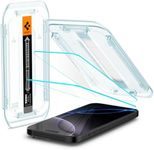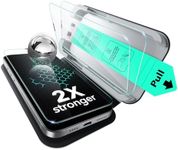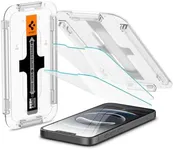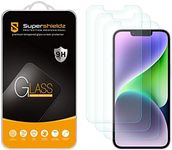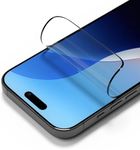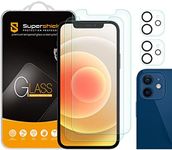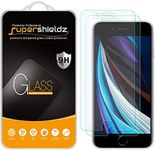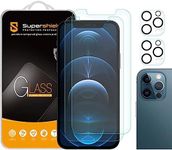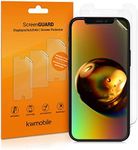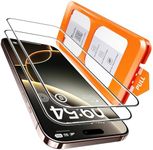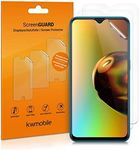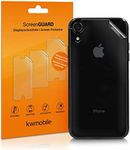Buying Guide for the Best Iphone Screen Protectors
Choosing the right screen protector for your iPhone is crucial to ensure the longevity and clarity of your device's display. Screen protectors serve as a barrier against scratches, smudges, and even cracks, which can occur from everyday use or accidental drops. When selecting a screen protector, consider factors such as material, thickness, and additional features to find the best fit for your lifestyle and usage habits.MaterialScreen protectors are typically made from tempered glass or plastic (PET or TPU). Tempered glass protectors offer superior protection against scratches and impacts, providing a feel similar to the original screen. They are ideal for users who prioritize durability and a premium feel. Plastic protectors, on the other hand, are thinner and more flexible, making them easier to apply and less noticeable. They are suitable for users who want basic protection and prefer a lightweight option. Consider your need for protection versus the feel and look you desire when choosing the material.
ThicknessThe thickness of a screen protector can affect both its protective capabilities and the touch sensitivity of your device. Thicker protectors, usually around 0.3mm to 0.5mm, offer better protection against drops and scratches but may slightly reduce touch sensitivity. Thinner protectors, around 0.1mm to 0.2mm, maintain the original touch experience but offer less impact resistance. If you frequently drop your phone or use it in rugged environments, a thicker protector might be more suitable. For everyday use with minimal risk, a thinner protector can provide adequate protection while preserving touch sensitivity.
CoatingMany screen protectors come with additional coatings, such as anti-glare, anti-fingerprint, or oleophobic coatings. Anti-glare coatings reduce reflections and improve visibility in bright environments, making them ideal for outdoor use. Anti-fingerprint coatings help keep the screen clean and smudge-free, which is great for users who frequently handle their phones. Oleophobic coatings repel oils and make cleaning easier, enhancing the overall look and feel of the screen. Consider your typical usage environment and how often you clean your screen when deciding on the type of coating you need.
Installation MethodThe installation method of a screen protector can affect how easy it is to apply and how well it adheres to the screen. Some protectors come with a dry application method, which involves simply aligning and pressing the protector onto the screen. Others use a wet application method, requiring a liquid solution to help position the protector before it dries. Dry application is quick and straightforward, suitable for users who want a hassle-free installation. Wet application can offer a more precise fit and is ideal for users who are comfortable with a more involved process. Consider your comfort level with installation and the importance of a perfect fit when choosing the method.
